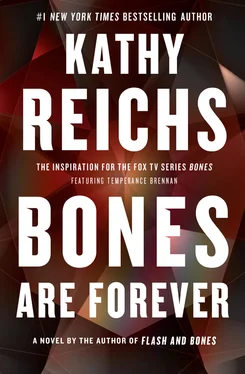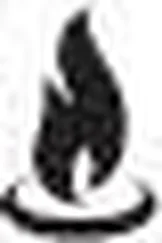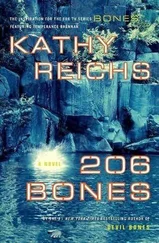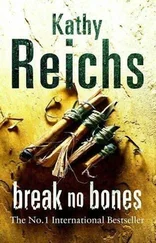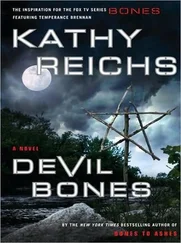I called out.
No answer.
A corridor shot from a doorway to the right of the desk. Walking down it toward the back of the building, I wondered how I’d recognize the man I was seeking.
No problem. Each office had a name plaque. Jacob Rainwater’s was at the end. His door was open.
Rainwater looked like the old professor from a Disney movie. Baggy sweater, bad haircut, wire-rimmed specs. The only thing that didn’t fit was the snazzy new Mac where he was working.
The office was a claustrophobic’s worst nightmare. An enormous desk and bulky file cabinets left only narrow passages for navigation about the small space. Every shelf and horizontal surface was covered with stacked papers and magazines, rolled maps, hunks of rock and petrified wood, and glass containers holding gravel and sand. If anything hung on a wall, it was hidden from view.
I cleared my throat.
Rainwater looked up. “Yes?”
“My name is Temperance Brennan. I have a few questions and was told you were very knowledgeable.”
“What kind of questions?”
“About prospecting.” Cautious.
“A prospector’s license is two dollars for an individual, fifty for a company. The girl out front can help you with that on Monday.”
Rainwater’s eyes returned to the screen. His fingers resumed their hunt-and-peck ballet.
“If you need a prospecting permit, you’re out of luck. Applications are accepted in December. Approved permits are issued effective February first of the following year. Permits are good for three years below the Sixty-eighth parallel, five years above. The cost is twenty-five dollars plus ten cents an acre.” Rainwater’s tone was robotic, suggesting he’d repeated the information thousands of times. “A prospecting permit gives you temporary but exclusive exploration and staking rights but not mineral rights.”
“Sir, I—”
“You need a valid prospector’s license to stake a claim but don’t need a prospecting permit. A claim requires four tagged posts. Tags cost two dollars a set. The girl out front can sell you those on Monday.”
“Mr. Rainwater—”
“It’s mandatory to check with this office before staking a claim to make sure the area is available and not already staked, claimed, or leased by someone else. The girl out front can—”
“I also want to learn about diamond indicator minerals.”
Rainwater’s eyes rolled up. He studied me through the upper portion of old-fashioned bifocal lenses. “What about them?”
I pulled the ketchup container from my purse. “I have a sample.” Lay it on. “I know this is irregular, and I know I’m being presumptuous, but your nephew says you’re a genius with these things.”
“You a friend of Joseph’s?”
“Mm.”
Rainwater hesitated, then waggled me in with upturned fingers.
As I wormed my way forward, he cleared space on his blotter, unfolded a white cloth, and spread it flat with his palms. Then he exchanged the bifocals for glasses with a little microscope stuck to each lens.
I gave him the purloined sample. He poured the gravel onto the cloth, turned on and adjusted a lamp clamped to one side of his desk, and leaned in.
I waited.
Every now and then Rainwater poked at the sample, rearranging the mix with one gnarled finger.
Long minutes passed. The entire floor was absolutely still.
“Have you anything else?” No robot now. Rainwater sounded genuinely interested.
I lay the five-by-seven on his desk.
The old man’s shoulders twitched, and I heard a sharp intake of air.
Rainwater switched back to the bifocals. Stared some more at the photo. Finally, his eyes met mine.
“My nephew put you up to some kind of stunt?”
“No, sir.”
“Sweet Lord in the rushes.”
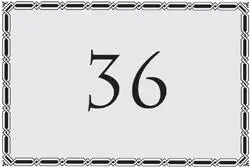
“DID YOU COLLECT THIS?”
“No, sir.”
“Who did you say you are?”
I repeated my name but offered nothing else.
“Got any idea what diamond indicator minerals are?”
“Crystals that form in the earth’s upper mantle as companions to diamonds.”
“Hm.”
“The difference is, DIMs are millions of times more numerous, so they’re worth next to nothing.” Trying to impress.
Rainwater hit a keyboard combo to save his work. “Do you know how to look through a scope, young lady?”
“I do.” Wishing Binny could have heard the appellation.
The old man swiveled and pulled the cover from a microscope I hadn’t noticed in the jumble behind his desk. The thing was primitive, probably from a student lab. “Prefer a scanning electron microscope, but this old gal will do.”
Rainwater transferred my sample to the viewing plate. Then he flicked a switch, shoved his glasses onto his forehead, peered through the eyepieces, and adjusted focus.
“Look at this.” Rolling his chair sideways.
I squeezed behind the desk and bent down.
And was amazed at the beauty of what I saw.
“That’s magnified two hundred times.”
“Wow,” I said.
“Pretty, eh? When a prospector is out panning or bagging or however he does his sampling, he’s mostly looking for hue.”
I was mesmerized by the colors and shapes of the crystals.
“See the red and orange ones? Those are from the garnet group. The green to sort of lemony-yellow ones are from the pyroxene group. Olivine is one. The black guys are ilmenites.”
“What causes the color differences?”
“Iron, manganese, and chromium content.”
“So you’re saying this sample contains diamond indicators.”
“It’s loaded. One of the richest I’ve ever seen. See those big green ones?”
“Yes.”
“And this.”
I straightened. Rainwater was holding the five-by-seven of the gravel in Ruben’s velvet sack.
“Good call including a scale.” He pointed at the green pebbles. “These are chunks of chrome diopside. Usually, they’re microscopic. The biggest I can recall seeing was maybe one centimeter. These are almost two centimeters each. Hell, you could mount these babies and sell them in a jewelry store.”
“Chrome diopside?” Calm.
“Crystals that form deep within the earth, then get carried to the surface in a rock called kimberlite, which is softer. Over the eons the kimberlite erodes away, leaving the crystals intact.”
“So this came from a site near a kimberlite pipe?” Calm.
“I’d say there’s a mighty good chance. I’d look for an infill lake or some similar formation.” Rainwater steepled his fingers and eyed me over them. “You seem quite knowledgeable yourself.”
“No, sir. Not really. But there’s one other thing. I wonder if you can tell me how to research a claim.”
“A mineral claim?”
I must have looked confused.
“A mineral claim must be recorded with this office within sixty days of the date it was staked. To do that, a staker files paperwork and a sketch of the claim and pays his fees.”
“A mineral claim does what?”
“Gives the owner rights to the subsurface minerals for up to ten years if a specific amount of work is done on the claim each year.”
I could hear Rainwater retreating into robot mode.
“If the required amount of work is done on the claim, a person or company can apply to lease the claim anytime before the thirtieth day after the tenth anniversary date of the claim. A mineral lease is good for twenty-one years and may be extended for another twenty-one years if the rental payments are up-to-date and the renewal fees are paid. If a person or company is going to begin production—meaning construction, mining, milling, etc.—then the claim must be taken to lease.”
Читать дальше
